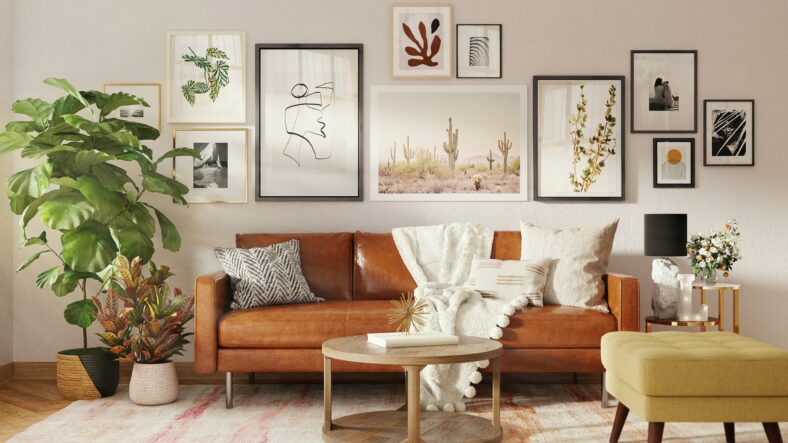Introduction:
A beautifully designed interior space has the power to captivate, inspire, and uplift the human spirit. Interior design is an art form that merges functionality with aesthetic appeal to create harmonious environments. By skillfully blending colors, textures, furnishings, and lighting, interior designers have the ability to transform ordinary spaces into extraordinary living sanctuaries. This article explores the multifaceted world of interior design, shedding light on its importance, principles, and the significant impact it has on our daily lives.
I. The Essence of Interior Design:
Interior design is the art of enhancing the interior of a space to achieve a healthier and more aesthetically pleasing environment for the people using it. It seeks to create a balance between functionality, comfort, and visual appeal. By understanding the needs and aspirations of clients, interior designers can curate personalized spaces that reflect their lifestyles and personalities. The primary goal of interior design is to optimize the functionality of a space while also creating an ambiance that evokes specific emotions and moods.
II. The Elements of Interior Design:
a. Colors: Color plays a pivotal role in interior design, as it has the ability to evoke emotions and set the tone for a space. From vibrant and energetic to soothing and serene, the right color palette can completely transform the ambiance of a room. Interior designers carefully select colors that harmonize with each other and resonate with the overall theme of a space.
b. Lighting: Lighting is a crucial aspect of interior design, as it not only serves the practical purpose of illuminating a room but also enhances its aesthetics. Various lighting techniques, such as ambient, task, and accent lighting, are employed to create layers of light that cater to different needs within a space. By skillfully combining natural and artificial light sources, interior designers can manipulate the ambiance and mood of a room.
c. Furnishings and Textures: Furniture and textures contribute significantly to the overall design language of a space. interior design rs carefully select furnishings that are functional, comfortable, and visually appealing. Additionally, they incorporate different textures, such as wood, metal, fabric, and glass, to create a tactile experience that adds depth and visual interest to a room.
III. Principles of Interior Design:
a. Unity and Harmony: Unity and harmony are fundamental principles of interior design. Achieving unity involves creating a cohesive and consistent design language throughout a space. This can be achieved through the repetition of colors, patterns, and textures. Harmony, on the other hand, refers to the balance and visual agreement between the various elements within a room.
b. Balance: Balance is the distribution of visual weight within a space. It can be achieved through symmetrical or asymmetrical arrangements of furniture and accessories. A well-balanced room creates a sense of equilibrium and calmness, enhancing the overall aesthetic appeal.
c. Proportion and Scale: Proportion and scale refer to the relationship between objects in a room. It is essential to strike a balance between oversized and undersized elements to maintain visual harmony. Interior designers carefully consider the dimensions of a space and select appropriate furniture and accessories to create a proportional and visually pleasing environment.
IV. The Impact of Interior Design:
a. Psychological Well-being: Interior design has a profound impact on our psychological well-being. A well-designed space can promote relaxation, creativity, and productivity, while a poorly designed one may induce stress or discomfort. By utilizing appropriate colors, lighting, and spatial arrangements, interior designers can optimize spaces to enhance mood and well-being.
b. Functional Optimization: Interior design ensures that spaces are functional and efficient. By considering the flow of movement, ergonomics, and spatial planning, interior designers can create spaces that maximize the utility of an area. Whether it’s a home, office, or public space, a well-designed interior facilitates ease of navigation and enhances productivity.
c. Personal Expression: Interior design provides an opportunity for individuals to express their personal style and preferences. By collaborating with interior designers, people can transform their living spaces into unique reflections of their identities. This personal touch creates a sense of ownership and fosters a deeper connection with one’s surroundings.
Conclusion:
Interior design is an art form that blends aesthetics, functionality, and human psychology. By carefully considering elements such as colors, lighting, furnishings, and textures, interior designers create spaces that harmonize with the needs and aspirations of individuals. The principles of unity, balance, proportion, and scale guide their creative process, resulting in personalized sanctuaries that enhance well-being and inspire. Embracing the transformative power of interior design allows us to shape our environments into havens of beauty, comfort, and self-expression.
